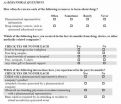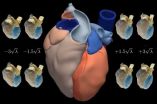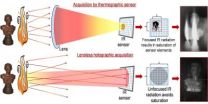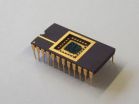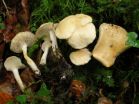(Press-News.org) The overuse of antibiotics has created strains of bacteria resistant to medication, making the diseases they cause difficult to treat, or even deadly. But now a research team at the University of Rochester has identified a weakness in at least one superbug that scientists may be able to medically exploit.
Biologists Gloria Culver at Rochester and Keith Connolly, now at Harvard University, thought one key to stopping the bacteria may lie with proteins, so they studied the mechanism behind the development of bacterial ribosomes—the cell's protein-manufacturing machine.
"We targeted the ribosomes in our research because cells and organisms can't live if they don't make proteins, and they can't make proteins if their ribosomes aren't functioning properly." said Culver.
Culver and Connolly specifically worked with cultures of E. coli, a bacteria commonly found in the intestines. While E. coli is usually harmless, some strains are resistant to antibiotics and can cause serious food poisoning.
They discovered that two proteins already present in E. coli cells—RbfA and KsgA—need to be in balance with each other in order for ribosomes to function. If those proteins are present in the wrong concentrations, the ribosomes will not mature properly and will be unable to produce proteins, leading to the death of the cells. Their findings are being published this week in the journal Molecular Microbiology.
Culver said with the discovery that KsgA and RbfA.must be balanced for the cells to function properly, the next goal is to determine an effective way to disrupt that balance.
Crucially, RbfA does not exist in humans. "That may make it possible," Culver said," to kill E. coli without having a harmful effect on people."
Eric Brown, a professor of biochemistry and biomedical sciences at McMaster University in Hamilton, Ont., calls their work creative and scholarly. "Ribosome assembly represents a rich target for much needed antibacterial drugs to treat drug-resistant infections," said Brown, "and this work offers new and important insights into the process."
Culver explained the role the proteins play in ribosome maturation. A healthy ribosome is made up of two compartments—or subunits—that must come together only when each one is mature. An overabundance of RbfA hurries the process along, which could result in an ineffective structure. The job of the KsgA is to bind with the smaller of the compartments, preventing the formation of the ribosome until both parts are ready.
Culver says RbfA and KsgA belong to "the chicken or the egg" category of microbiology. While they're essential to the development of ribosomes, the ribosomes themselves are needed to create proteins, including the RbfA and KsgA. She calls it an ongoing and intriguing question for biologists.
### END
Superbugs may have a soft spot, after all
2013-02-26
ELSE PRESS RELEASES FROM THIS DATE:
Gut microbiota plays important role in functional bowel disorders
2013-02-26
(24 February 2013) An estimated 50 per cent of patients consulting a gastroenterologist suffer from functional bowel disorders (FBD), such as dyspepsia or irritable bowel syndrome (IBS). It is characteristic for these conditions that underlying physiological mechanisms are hard to be found. "However, recent research shows that the gut microbiota is a likely candidate for filling some of the gaps in the causal chain leading to FBD," says Professor Fernando Azpiroz, Chairman of the Gut Microbiota & Health Section of the European Society of Neurogastroenterology & Motility ...
Fecal microbiota transplantation cures gastrointestinal diseases
2013-02-26
(26 February 2013) Clostridium difficile infections have developed into a virtual pandemic over the past two decades. The outcome of standard antibiotic treatment is unsatisfactory: the recurrence rates are high with every relapse increasing the risk of further follow-ups. Faecal microbiota transplantation offers a rapidly acting and highly effective alternative in treating recurrent Clostridium difficile infections (RCDI), as Professor Lawrence J. Brandt (Montefiore Medical Center, New York, USA) points out. According to him, more than 90 per cent of the patients are being ...
Survey shows medical students have frequent interactions with pharmaceutical companies
2013-02-26
Boston – A first-of-its kind national survey of medical students and residents finds that despite recent efforts by medical schools and academic medical centers to restrict access of pharmaceutical sales representatives to medical trainees, medical students and residents still commonly receive meals, gifts, and industry-sponsored educational materials. The study was completed by a team of researchers led by fourth-year Harvard Medical School student Kirsten Austad and Aaron Kesselheim, M.D., J.D., M.P.H., an internist and health policy researcher in the Division of Pharmacoepidemiology ...
An atlas of the human heart is drawn using statistics
2013-02-26
Researchers at Pompeu Fabra University (Spain) have created a high resolution atlas of the heart with 3D images taken from 138 people. The study demonstrates that an average image of an organ along with its variations can be obtained for the purposes of comparing individual cases and differentiating healthy forms from pathologies.
"This atlas is a statistical description of how the heart and its components – such as the ventricles and the atrium – look," as explained to SINC by Corné Hoogendoorn, researcher at the CISTIB centre of the Pompeu Fabra University.
Scientists ...
Infrared digital holography allows firefighters to see through flames, image moving people
2013-02-26
Firefighters put their lives on the line in some of the most dangerous conditions on Earth. One of their greatest challenges, however, is seeing through thick veils of smoke and walls of flame to find people in need of rescue. A team of Italian researchers has developed a new imaging technique that uses infrared (IR) digital holography to peer through chaotic conflagrations and capture potentially lifesaving and otherwise hidden details. The team describes its breakthrough results and their applications in a paper published today in the Optical Society's (OSA) open-access ...
Sweet news for stem cell's 'Holy Grail'
2013-02-26
Scientists have used sugar-coated scaffolding to move a step closer to the routine use of stem cells in the clinic and unlock their huge potential to cure diseases from Alzheimer's to diabetes.
Stem cells have the unique ability to turn into any type of human cell, opening up all sorts of therapeutic possibilities for some of the world's incurable diseases and conditions.
The problem facing scientists is how to encourage stem cells to turn into the particular type of cell required to treat a specific disease.
But researchers at the University of Manchester's School ...
A picture of health in schools
2013-02-26
Feeling comfortable and confident in sport, health, or PE can be very difficult for some young people who can be seen as a 'risk' of becoming obese. Young people from ethnic minorities, especially girls, are more likely to be physically inactive and unhealthy.
This perception needs to be addressed and challenged in school physical education (PE) according to research funded by the Economic and Social Research Council (ESRC), which shows how school provision could make use of visual approaches in developing young people's critical learning about the body.
When Dr Laura ...
Blueprint for an artificial brain
2013-02-26
This press release is available in German.
Scientists have long been dreaming about building a computer that would work like a brain. This is because a brain is far more energy-saving than a computer, it can learn by itself, and it doesn't need any programming. Privatdozent [senior lecturer] Dr. Andy Thomas from Bielefeld University's Faculty of Physics is experimenting with memristors – electronic microcomponents that imitate natural nerves. Thomas and his colleagues proved that they could do this a year ago. They constructed a memristor that is capable of learning. ...
2 new species of mushroom documented in the Iberian Peninsula
2013-02-26
In collaboration with the Royal Botanic Gardens of Madrid and the Slovenian Forestry Institute, researchers in the Basque Country have documented two new species of Hydnum, commonly known as ox tongue mushrooms, as part of their study published in the 'Mycologia' journal. This genus is known because many of its fungi are edible.
Spanish researchers have headed the discovery of two mushroom species belonging to the Hydnum genus, a type of fungus commonly used in cooking.
"During our study we discovered two new species: Hydnum ovoideisporum and Hydnum vesterholtii, which ...
EARTH: Setting sail on unknown seas
2013-02-26
Alexandria, VA – On June 5, 2012, a massive dock made landfall on Oregon's Agate Beach, just north of Newport. The dock carried with it a host of castaways, including as many as a hundred species of mollusks, anemones, sponges, oysters, crabs, barnacles, worms, sea stars, mussels and sea urchins. A placard on the side written in Japanese revealed that the dock had been unmoored from the Japanese coastal city of Misawa during the catastrophic tsunami on March 11, 2011, bringing with it an essentially intact subtidal community of Asian species to the Pacific Northwest. Although ...
